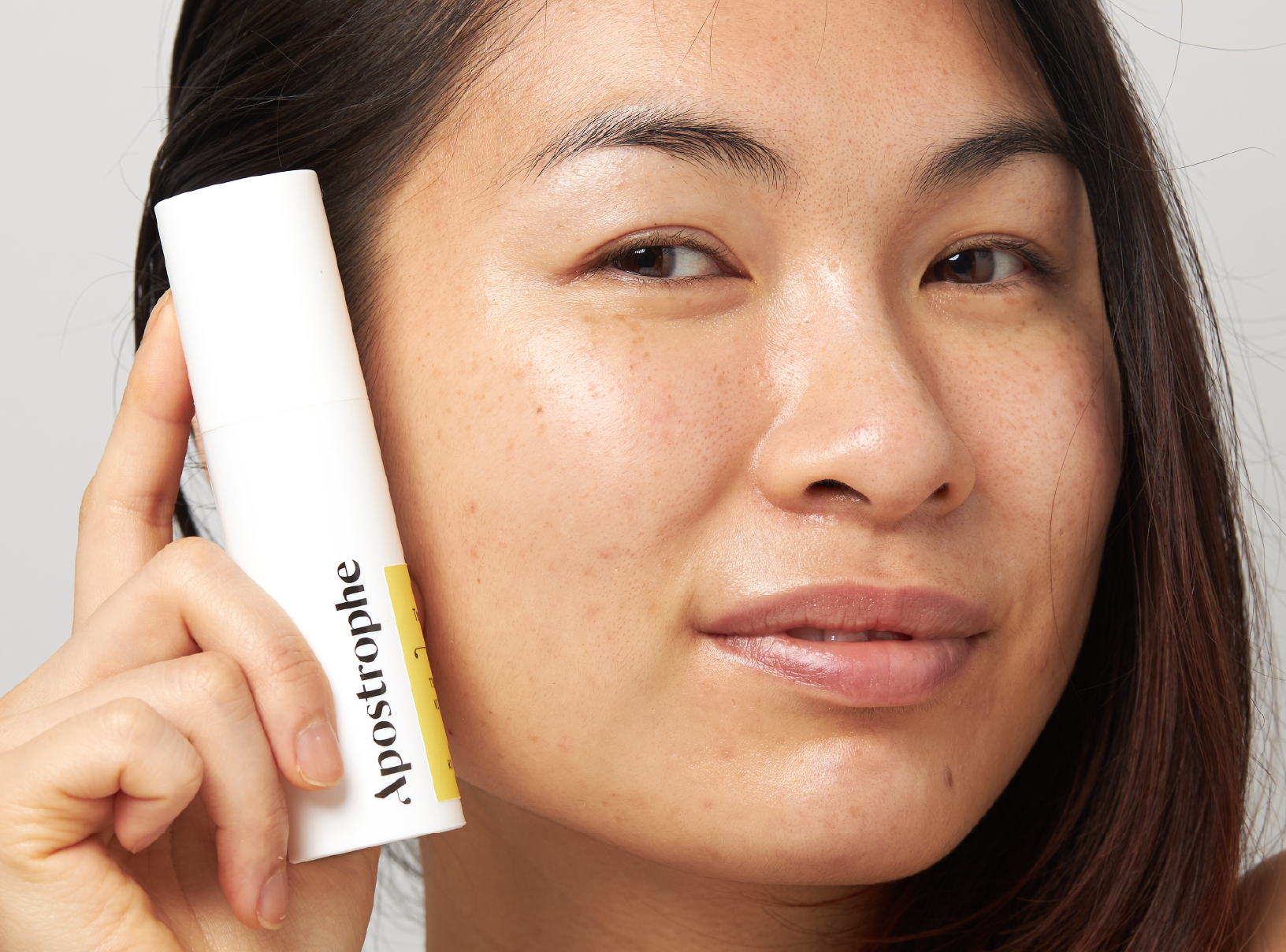Education
Forehead acne: Get rid of pimples on your forehead


SHARE
Education
Forehead acne: Get rid of pimples on your forehead
Medically reviewed by Kristin Hall, FNP
Written by Apostrophe Team
Last updated 11/3/2024
Dealing with acne is bad no matter where it is. But when it clusters in a spot that you just can’t hide, it can be particularly annoying.
Forehead acne can make you want to hide out at home, permanently. But you don’t have to. There is no magical cure for acne, but there are scientifically proven treatment methods.
You may have heard that acne on different areas of your face can be attributed to specific deficiencies or health issues.
Called “face mapping,” the idea is comforting — pinpoint where your zits are and identify their “fix.”
The problem is: there’s no scientific evidence that face mapping is legitimate. And we like science. So put down the face map, and let’s get real.
What Causes Acne?
Pimples happen when sebum (facial oil) gets trapped beneath the surface of the skin.
Generally, this oil travels up your hair follicles and moisturizes your skin, but when it’s trapped — generally by dead skin cells blocking its passage — a zit results.
Repeat this several times over, and you have an acne breakout.
Several things can trigger acne, the most obvious of which is hormones. The effects of hormones on acne are well illustrated by teenage faces — the upheaval of hormones people experience in adolescence triggers all sorts of interesting changes, including an increased occurrence of acne.
But hormonal changes can affect your complexion well into adulthood.
Women may experience increased acne breakouts during certain points of their menstrual cycle, like at ovulation or menstruation. You may also suffer from acne when you’re menopausal or pregnant.
Other acne triggers can include stress, smoking, diet, sleep problems, endocrine disorders such as PCOS, certain cosmetics or topical products, and some medications.
Any one of these factors could be contributing to acne breakouts on your forehead. They each have an impact on the amount of sebum you produce, your vulnerability to bacteria under your skin’s surface, the shedding of dead skin cells, and immune function.
External Causes to Forehead Breakouts
In addition to these general acne contributors, you may take a closer look at what might be making your forehead more vulnerable than other areas of your face and body.
For example, do you wear a helmet?
Acne mechanica is a type of acne caused when sweat and heat are trapped against the skin. It generally begins as small rough bumps that can turn into pimples and acne cysts.
Common culprits are helmets, headbands, face guards, and other sports equipment that’s in constant contact with your face.
Another potential culprit is face and hair products that could be irritating your forehead.
If your forehead breakouts are new, take inventory on what you’ve changed in your hair and skincare routines.
Maybe you’re using a new conditioner that’s getting on your forehead and clogging your pores, or you’ve begun using a new sunscreen on your dome in the summertime.
Adjusting your product usage could provide insight into whether these things are contributing to your acne.
Treating the Acne on Your Forehead
Acne on your forehead is treated in the same manner as acne on your nose or chin — with scientifically proven approaches.
The good news: there are plenty to choose from, and a healthcare professional can help you select the right treatment regimen given your skin type, medical history, and the characteristics of your acne.
Removing the factors that could be irritating your forehead — such as a dirty, sweaty helmet — gives you a head start on acne treatment. But your healthcare provider may also recommend:
Over-the-counter topical products. Face washes, gels and creams containing benzoyl peroxide are often a first-line defense against acne.
Though this active ingredient can overdry your skin and bleach your clothing, it has anti-inflammatory effects and can control the bacteria that lead to acne breakouts.
Prescription topical products. Topical retinoids are the most common prescription products recommended by healthcare providers. They’ve been in use for over 30 years, and are well-tolerated and effective. Your healthcare provider may also recommend a topical antibiotic.
Prescription oral medications. In cases of severe acne, your healthcare provider may prescribe an oral antibiotic such as tetracyclines.
These medications may be used in conjunction with topical therapies.
Living with forehead acne can be hard, and embarrassing. But you don’t have to live with it. There are solutions that can help eliminate your current pimples and prevent new breakouts, allowing you to put your best face forward.
References:
https://www.hopkinsmedicine.org/health/conditions-and-diseases/acne
https://www.aad.org/public/diseases/acne/causes/sports-equipment
Like what you just read? Sign up for our email list to get the scoop on skincare science delivered straight to your inbox.

Education
What is milia?
What is milia? Today, we’re jumping into one type of bump that you may have heard about most commonly in infants — milia.
Read More
Education
Best moisturizer for acne-prone skin
If you have combination acne-prone skin, figuring out which moisturizer is best for your skin might be tough. In this guide, we break down the best moisturizer for combination, acne-prone skin.
Read More
Education
How to build a face care routine
As you get into skincare, it might seem overwhelming, especially trying to figure out the order you're supposed to apply products in. Below, we detail how to build a face care routine for your skin!
Read More
